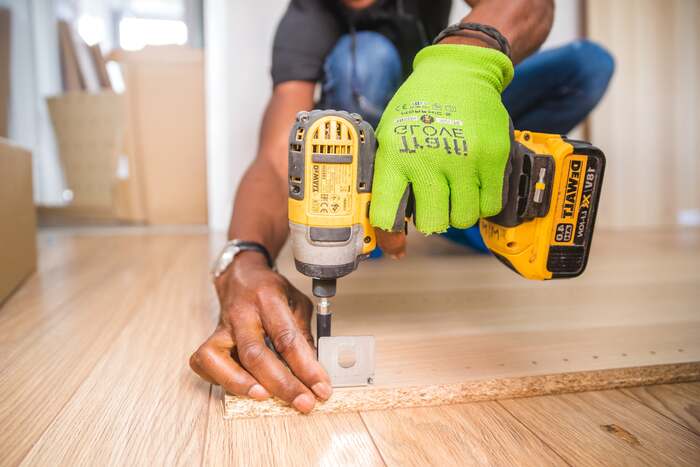
The canvas of your home offers a palette for creativity and enhancement, where every brushstroke of renovation breathes new life into your living space. The transition may be both rewarding and captivating with the appropriate direction and a calculated strategy. This guide unveils essential tips and insights to navigate the transformation, empowering you to orchestrate a remarkable makeover that mirrors your vision and lifestyle. Discover how careful assessment, planning, material selection, and design finesse can shape your humble dwelling into a haven of style and comfort.
Assessing Your Home
Evaluate your home’s overall condition and structural stability to initiate a successful transformation. Examine the windows thoroughly, taking into account things like age, usability, and energy efficiency. Assessing the need for window replacement is essential to enhance insulation and reduce energy costs. Pay attention to signs of wear and tear, like drafts or difficulty in opening and closing, which may necessitate finding services for window replacement in Denver or your area. Assessing the windows allows you to make informed decisions about upgrades and improvements that align with your home transformation goals.
Planning Your Home Transformation
Define a clear vision for the desired outcome of your home transformation, incorporating your unique preferences and style. Consult with experts to gain useful information for a well-informed strategy, such as architects, designers, or contractors. Create a comprehensive blueprint that includes timelines, resource allocation, and a step-by-step approach to achieve your envisioned transformation. Align the plan with your budget constraints, ensuring a realistic financial framework. Consider the structural aspects of your home and evaluate any necessary repairs or adjustments. Incorporate flexibility into the plan to adapt to unexpected challenges and changes, ensuring a smooth and successful execution.
Selecting Materials and Finishes
Conduct a thorough analysis of the many material choices available for your home renovation project, taking durability, aesthetics, and maintenance needs into account. To ensure a unified and aesthetically pleasing result, coordinate the finishes and colors with your overall design theme. Prioritize quality and functionality when making material selections, aiming for options that serve their intended purpose effectively and stand the test of time. Evaluate the cost-efficiency of materials in relation to their durability and suitability for the intended applications within your project. Seek expert advice or consult with professionals to make informed decisions regarding the best materials and finishes for your specific home transformation needs.
DIY vs. Hiring Professionals
Assess your skills and experience to determine if you are capable of undertaking DIY projects for your home transformation. Consider the complexity of the tasks involved and whether professional expertise is necessary to ensure a successful outcome. Weigh the time and effort required for a DIY approach against the convenience and specialized skills offered by hiring professionals. Consider the potential dangers and difficulties involved with doing DIY projects, with a focus on quality and safety. Evaluate the overall cost implications of DIY projects compared to hiring professionals, bearing in mind the balance between cost-effectiveness and achieving desired results. To decide on the best strategy for your home renovation, strike the correct mix between DIY projects and professional involvement, seek advice, and talk with specialists.
Management of Projects and Execution
Follow the deadlines specified in your project plan to the letter, making sure that each task is finished by the deadline. Maintain clear communication channels with all involved parties, addressing any concerns promptly and clarifying expectations to foster a cohesive and productive work environment. Stay organized and focused throughout the execution phase, following the comprehensive project blueprint meticulously. Create backup plans to deal with probable setbacks while maintaining alignment with the project’s overall vision. Regularly monitor progress and evaluate performance to ensure the project remains on track and meets the established goals. Be flexible and adaptive in response to unforeseen circumstances, making necessary adjustments without compromising the overall project integrity.
Adding the Final Touches
Personalize your space by incorporating individual touches through decor, furnishings, and artwork that resonate with your style and personality. Optimize lighting arrangements strategically, enhancing the ambiance of your space to suit your desired mood and functionality. Pay attention to finer details such as accessories and accents that complement the overall design theme, contributing to a cohesive and aesthetically pleasing environment. Evaluate the spatial layout and ensure that furniture and decor items are positioned for maximum visual impact and utility. Consider the balance between minimalism and functionality, allowing your home’s final look to exude a sense of completeness and sophistication. Maintain a keen eye for design coherence, ensuring that each element harmoniously fits within the broader context of your home’s transformation.
Conclusion
The careful planning, thoughtful material selection, and skilled execution have culminated in a space that now effortlessly blends form and function. As you revel in the beauty of your revitalized abode, remember that this transformation is a testament to the art of vision and the joy of achieving a dream turned reality. Your home now stands as a testimony to your vision and perseverance in creating a space that reflects your unique identity.
Leave a Reply